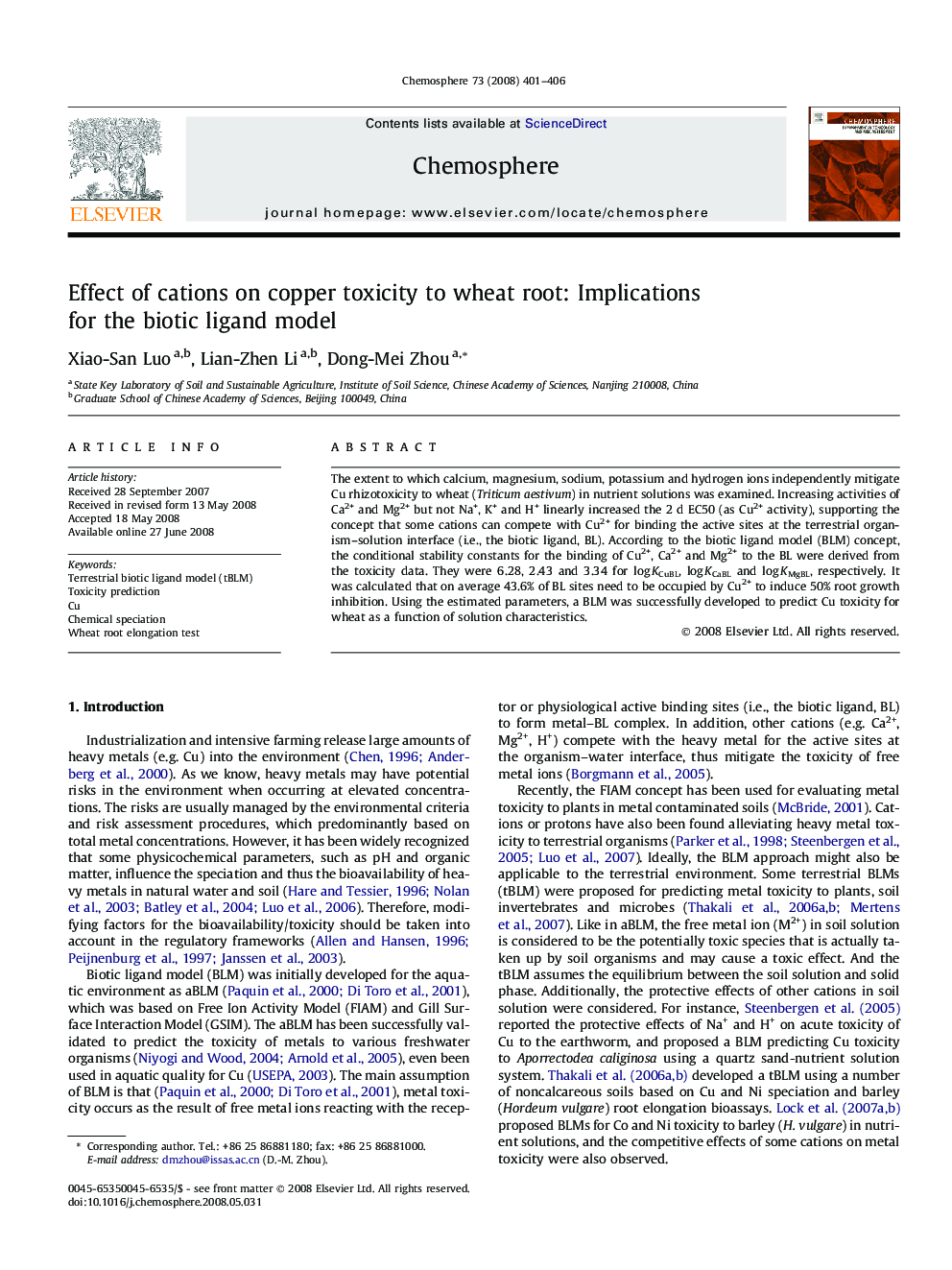| Article ID | Journal | Published Year | Pages | File Type |
|---|---|---|---|---|
| 4413468 | Chemosphere | 2008 | 6 Pages |
The extent to which calcium, magnesium, sodium, potassium and hydrogen ions independently mitigate Cu rhizotoxicity to wheat (Triticumaestivum) in nutrient solutions was examined. Increasing activities of Ca2+ and Mg2+ but not Na+, K+ and H+ linearly increased the 2 d EC50 (as Cu2+ activity), supporting the concept that some cations can compete with Cu2+ for binding the active sites at the terrestrial organism–solution interface (i.e., the biotic ligand, BL). According to the biotic ligand model (BLM) concept, the conditional stability constants for the binding of Cu2+, Ca2+ and Mg2+ to the BL were derived from the toxicity data. They were 6.28, 2.43 and 3.34 for log KCuBL, log KCaBL and log KMgBL, respectively. It was calculated that on average 43.6% of BL sites need to be occupied by Cu2+ to induce 50% root growth inhibition. Using the estimated parameters, a BLM was successfully developed to predict Cu toxicity for wheat as a function of solution characteristics.
